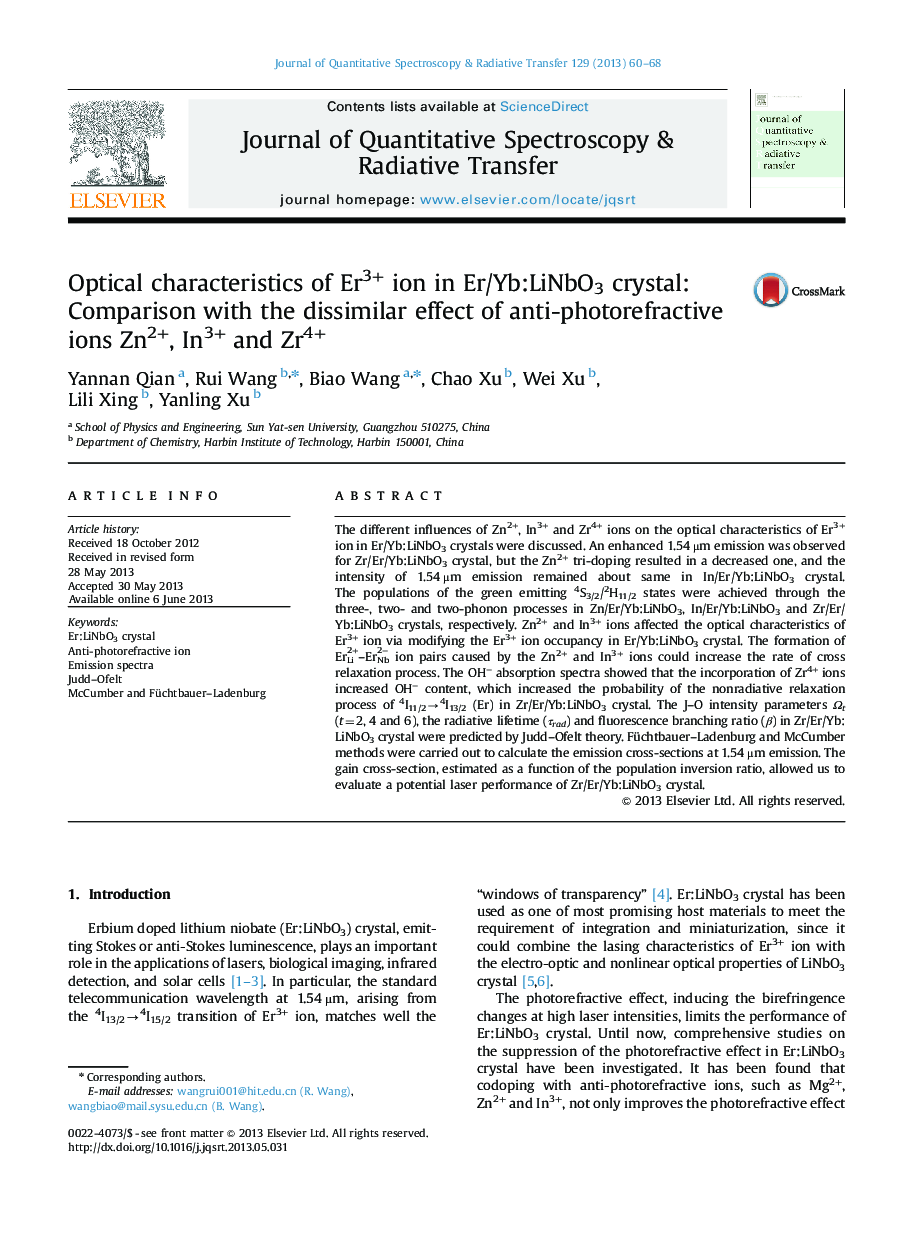| Article ID | Journal | Published Year | Pages | File Type |
|---|---|---|---|---|
| 5428766 | Journal of Quantitative Spectroscopy and Radiative Transfer | 2013 | 9 Pages |
â¢The different effect of anti-photorefractive ions on Er/Yb:LiNbO3 crystal.â¢Zn2+ and In3+ affect the rate of cross relaxation process.â¢Zr4+ ion increases the nonradiative relaxation of 4I11/2â4I13/2.â¢The Judd-Ofelt intensity parameters are discussed.â¢The absorption and emission cross-section at 1.54 μm are calculated.
The different influences of Zn2+, In3+ and Zr4+ ions on the optical characteristics of Er3+ ion in Er/Yb:LiNbO3 crystals were discussed. An enhanced 1.54 μm emission was observed for Zr/Er/Yb:LiNbO3 crystal, but the Zn2+ tri-doping resulted in a decreased one, and the intensity of 1.54 μm emission remained about same in In/Er/Yb:LiNbO3 crystal. The populations of the green emitting 4S3/2/2H11/2 states were achieved through the three-, two- and two-phonon processes in Zn/Er/Yb:LiNbO3, In/Er/Yb:LiNbO3 and Zr/Er/Yb:LiNbO3 crystals, respectively. Zn2+ and In3+ ions affected the optical characteristics of Er3+ ion via modifying the Er3+ ion occupancy in Er/Yb:LiNbO3 crystal. The formation of ErLi2+-ErNb2â ion pairs caused by the Zn2+ and In3+ ions could increase the rate of cross relaxation process. The OHâ absorption spectra showed that the incorporation of Zr4+ ions increased OHâ content, which increased the probability of the nonradiative relaxation process of 4I11/2â4I13/2 (Er) in Zr/Er/Yb:LiNbO3 crystal. The J-O intensity parameters Ωt (t=2, 4 and 6), the radiative lifetime (Ïrad) and fluorescence branching ratio (β) in Zr/Er/Yb:LiNbO3 crystal were predicted by Judd-Ofelt theory. Füchtbauer-Ladenburg and McCumber methods were carried out to calculate the emission cross-sections at 1.54 μm emission. The gain cross-section, estimated as a function of the population inversion ratio, allowed us to evaluate a potential laser performance of Zr/Er/Yb:LiNbO3 crystal.
